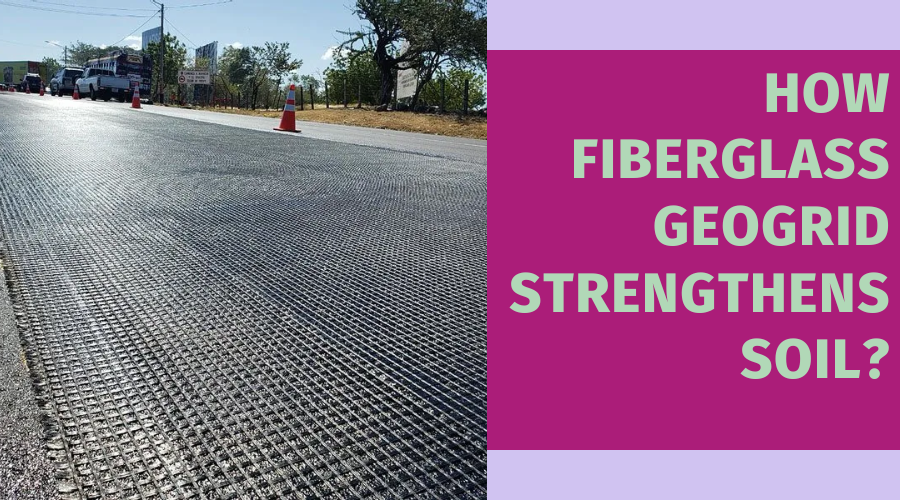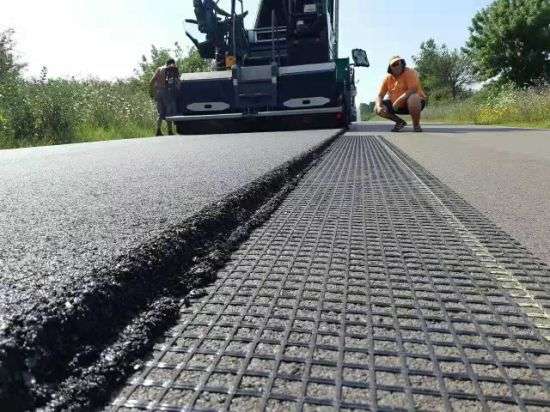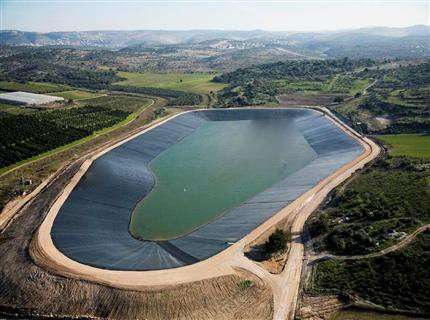
Blog

Aug 22,2024
How Fiberglass Geogrid Strengthens Soil?
Have you ever driven down a road that feels a bit wavy? Have you seen a precarious slope on the side of a construction site? Weak or unstable soil can be a real headache for engineers and construction crews. But fear not; there's a reliable hero in the world of civil engineering called fiberglass geogrid, and it's here to save the day!
How Does Glass Geogrid Make the Soil Sturdy?
The Grip of a Thousand Tiny Hands
Fiberglass geogrid acts like countless tiny hands interlacing with the soil particles. This creates a web-like structure that distributes pressure more evenly. Now, imagine pressing down on the marbles – they resist movement because they're caught in the geogrid's grasp. That's precisely what happens in the real world!
The Anchoring Powerhouse
Fiberglass geogrid acts like an anchor, its strong mesh structure digging into the soil and preventing it from erosion. Think of it like burying a net under the slope – the soil gets trapped within the mesh, preventing it from becoming a muddy mess.
Spreading the Load Like a Boss
Think about a heavy truck driving on a weak road. The weight concentrates on a small area, causing the soil to compress and crack. A fiberglass geogrid acts like a weight distributor. As the truck rolls over, the geogrid spreads the pressure out over a larger area, preventing the soil from collapsing under the weight. Imagine the truck's tires pressing down on a giant trampoline—the force is dispersed, preventing any one spot from taking the brunt of the impact.
The Benefits You Can See and Feel
Now that you understand the magic of fiberglass geogrid let's explore the real-world advantages it brings:
More vital Roads:
With a stable base, roads become smoother and last longer. Imagine driving on a freshly paved road – that's the kind of smooth ride fiberglass geogrid helps create.
Safer Slopes:
No more worrying about landslides! The anchored soil creates a secure slope, preventing accidents and protecting property. Imagine a hillside covered in lush greenery, held firmly in place – that's the peace of mind fiberglass geogrid offers.
Reduced Construction Costs:
Fiberglass geogrids help save money on repairs and maintenance by preventing soil erosion and failure. Imagine a construction project that runs smoothly without unexpected soil problems—that's the cost-effectiveness of fiberglass geogrids.
Beyond the Mesh: Reinforcement Mechanisms
Fiberglass geogrid's effectiveness goes beyond just physically interlocking with soil particles. Here's a breakdown of its reinforcement mechanisms:
Mechanical Interlocking:
As mentioned earlier, the mesh structure physically traps soil particles, preventing them from moving independently. Imagine a net filled with pebbles – the pebbles are held captive, creating a more unified structure.
Frictional Interaction:
The rough surface of the fiberglass filaments creates friction with the soil particles. This friction resists movement, adding another layer of stability. Think of rubbing sandpaper – the friction creates resistance to movement.
Confinement Effect:
The geogrid confines the soil particles, preventing them from spreading outwards. This confinement increases the soil's internal strength, similar to how a tightly packed suitcase is more structurally sound than a loosely filled one.
While road and slope reinforcement are typical applications, fiberglass geogrid's versatility extends to various projects, giving you the confidence to tackle any Soil-related challenge.
Choosing the Right Fiberglass Geogrid
Fiberglass geogrid isn't a one-size-fits-all solution. Different projects require specific properties. Here are some factors to consider when choosing the right geogrid:
Tensile Strength refers to the geogrid's ability to resist pulling forces. Higher tensile strength is needed for projects under more significant stress, like high-traffic roads.
Aperture Size:
This is the size of the openings in the mesh. Smaller apertures provide better confinement for loose soil, while larger ones offer better drainage capabilities for wet environments.
Rib Profile:
Some geogrids have smooth surfaces, while others have ribbed textures. Ribs enhance the geogrid's interaction with soil particles, providing additional grip and strength.
The Future of Fiberglass Geogrid:
The world of geogrids is constantly evolving. Here are some exciting advancements to look forward to:
Biodegradable Geogrids:
Manufacturers are researching biodegradable alternatives to traditional fiberglass as environmental concerns grow. Imagine geogrids that decompose naturally without harming the environment.
Composite Geogrids:
Combining fiberglass with other materials, such as geotextiles (fabric-like), can offer additional functionalities. Imagine a geogrid that reinforces and filters water, preventing drainage issues.
Advanced Manufacturing Techniques:
New manufacturing processes are being explored to create more robust and lighter geogrids, leading to more efficient and cost-effective solutions. Imagine geogrids that offer superior strength with less material, minimizing resource usage.
Conclusion: A Foundation You Can Trust
Fiberglass geogrid, a seemingly simple mesh material, is crucial in creating a stable foundation for our infrastructure. Its ability to reinforce soil, distribute weight, and prevent erosion ensures safe and long-lasting roads, slopes, buildings, and landscapes.
Fiberglass Geogrid: Frequently Asked Questions
Is fiberglass geogrid challenging to install?
Not at all! The lightweight mesh is easy to handle and can be quickly laid down on the ground. Think of it like rolling out a giant sheet – a simple and efficient process.
Is fiberglass geogrid eco-friendly?
Fiberglass geogrid is a long-lasting material that reduces the need for frequent repairs and replacements. Additionally, some manufacturers offer recycled content options.
Can fiberglass geogrid be used in different climates?
Absolutely! Fiberglass geogrid is resistant to corrosion and extreme temperatures, making it suitable for various climates.







